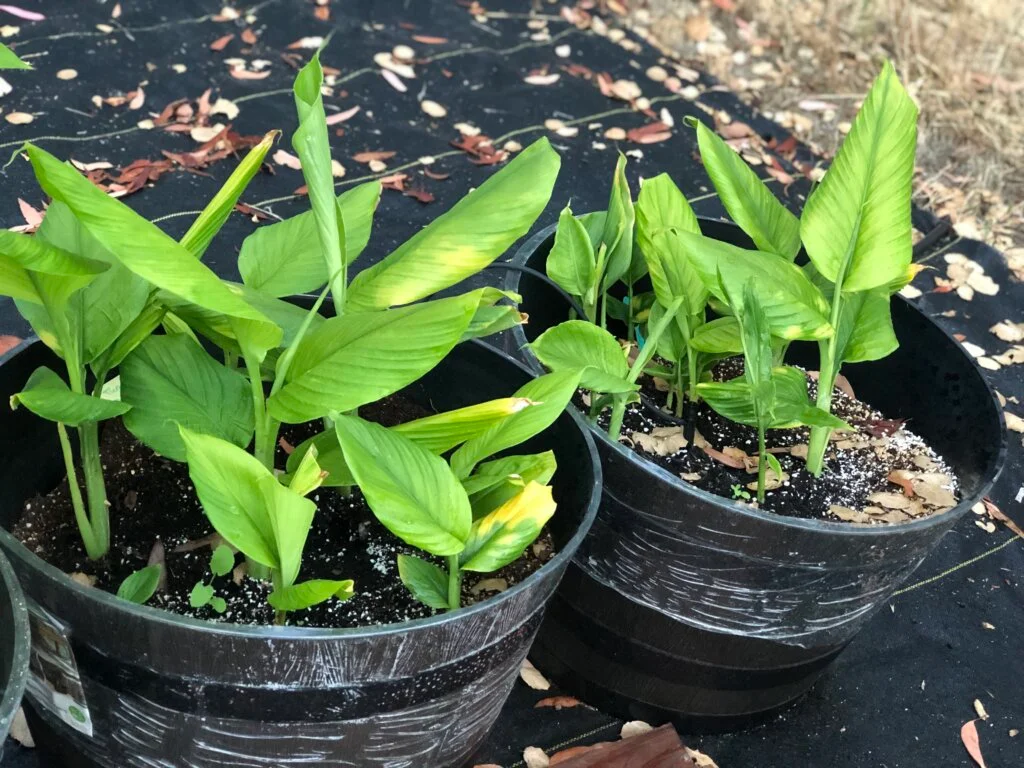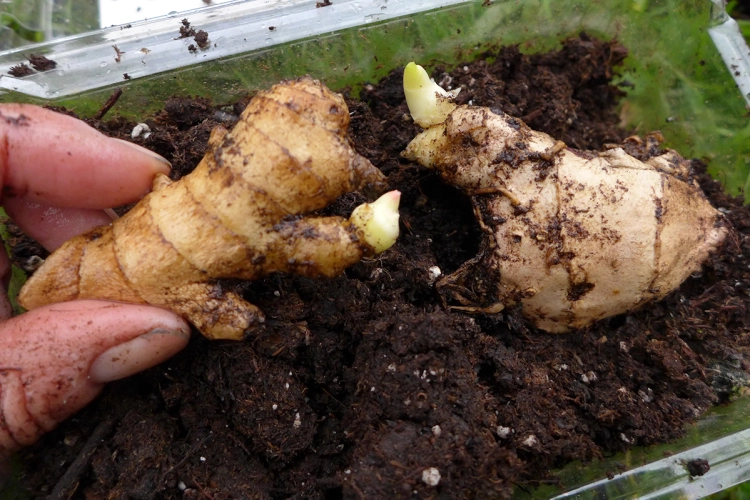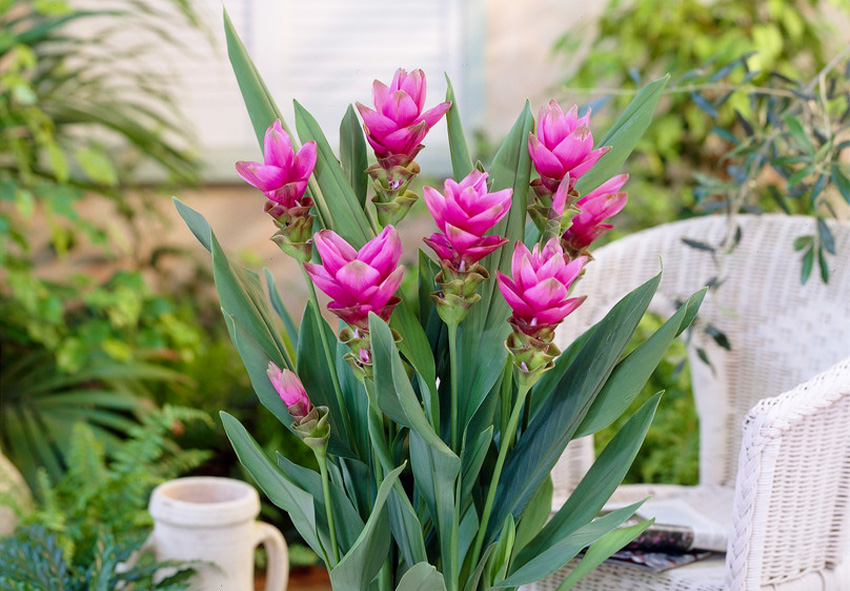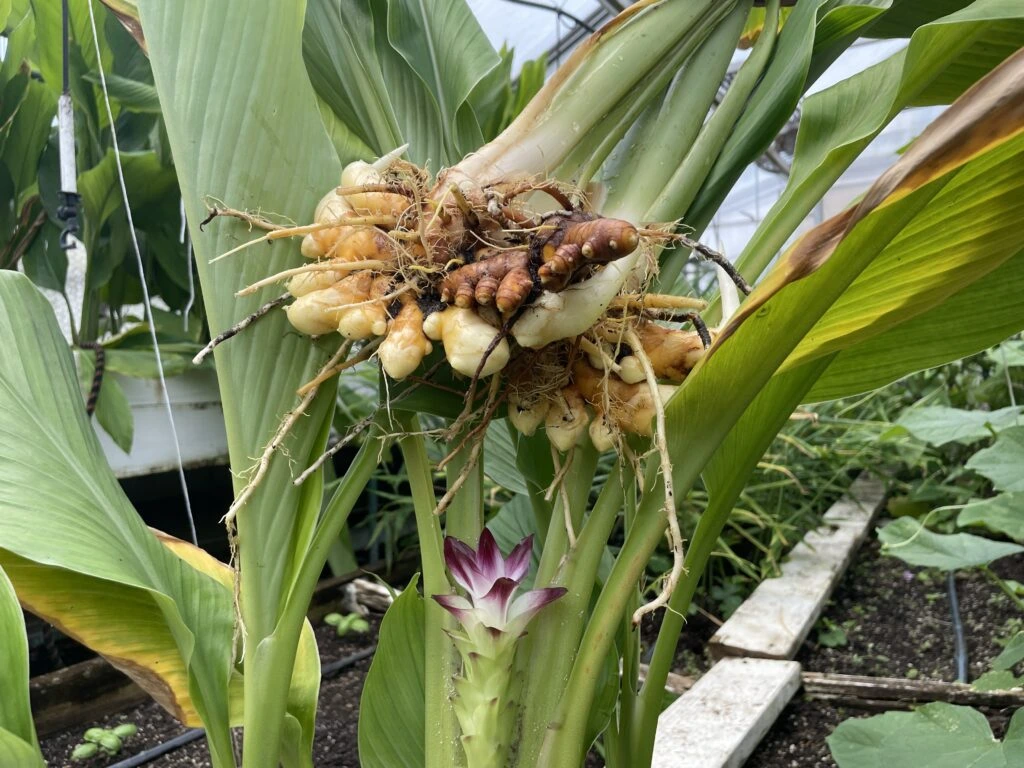Turmeric is more than just a vibrant spice that adds depth to your cooking—it’s a beautiful and rewarding plant to grow right at home! Whether you’re an experienced gardener or just starting out, turmeric is surprisingly easy to cultivate in pots. Not only can you enjoy the beauty of the plant indoors, but you’ll also have access to fresh, homegrown turmeric when you’re ready to harvest. This guide will walk you through everything you need to know about growing Turmeric in pots, from selecting the best pot to harvesting those golden roots.
What is Turmeric?
Turmeric (Curcuma longa) is a tropical perennial plant that’s closely related to ginger. Its stunning, large green leaves and vibrant golden roots make it a striking addition to any home or garden. While turmeric is most famous for the spicy, earthy flavor it brings to your dishes, it’s also known for its many health benefits, thanks to curcumin, the compound that gives it its distinctive yellow color. Growing turmeric in pots gives you the opportunity to enjoy its beauty and benefits in the comfort of your own home.
Why Grow Turmeric in Pots?

Here’s why growing turmeric in pots is such a great idea:
Perfect for Small Spaces
Not everyone has the luxury of a sprawling garden, but that doesn’t mean you can’t grow turmeric. Pots are ideal for those with limited space, such as apartment dwellers or people with small balconies or patios. Turmeric can thrive in containers as long as it has enough space for its roots to spread out.
Convenience and Mobility
One of the great things about growing turmeric in pots is that it’s mobile! If you need to move your plant around to catch the sun or bring it inside during colder months, pots make it easy to do so. You can also place it in different spots in your home to enhance the décor, bringing both beauty and function into your space.
Read more: How to Grow Cucamelon in Pots: A Complete Guide
Best Containers for Growing Turmeric
The right container is crucial to growing healthy, thriving turmeric. It needs enough space for its roots to spread out and plenty of drainage to avoid root rot.
Choosing the Right Pot Size
When selecting a pot for your turmeric, size matters. Choose a pot that is at least 12-18 inches deep, as turmeric’s roots (rhizomes) grow horizontally and need space to expand. The larger the pot, the better your plant will grow, but be sure to pick a size that fits your available space. You want to give the turmeric room to grow, but you also don’t want the pot to be too big for your environment. You may like: How to Prepare Soil to Plant: A Step-by-Step Guide for Beginners
Material and Drainage Considerations
Turmeric needs well-draining soil to thrive. Make sure the pot you choose has drainage holes at the bottom to prevent water from accumulating, which can lead to root rot. Pots made from terracotta, ceramic, or plastic work well as long as they allow for good water drainage. Additionally, you can place a layer of small stones at the bottom of the pot to enhance drainage.
How to Plant Turmeric in Pots

Preparing the Pot and Soil
Start by filling your pot with a rich, loamy soil mix. Turmeric thrives in soil that’s well-drained and full of organic matter like compost, worm castings, or aged manure. The ideal pH level for turmeric is slightly acidic, around 6.0 to 7.0. If you’re unsure about your soil’s pH, you can test it with a simple soil testing kit.
Planting Seeds or Seedlings
Although you can technically grow turmeric from seeds, it’s much easier and quicker to grow it from rhizomes. You can find turmeric rhizomes at garden centers or online, and sometimes even at grocery stores. Choose rhizomes with a few “eyes”—small growth points where new shoots will develop. Cut the rhizomes into 2-4 inch pieces, making sure each piece has at least one eye. Allow the cut pieces to dry out for a couple of days before planting to prevent rotting.
Now, plant the rhizomes in the pot about 2-4 inches deep, with the eyes facing upward. Space the rhizomes 6 inches apart to give them room to grow. Once planted, water them well and place the pot in a warm area with bright, indirect sunlight.
Care and Maintenance for Turmeric in Containers

Here are a few essential tips to help you keep your turmeric plant thriving:
Watering and Fertilizing
Turmeric loves moisture, but it doesn’t like being waterlogged. Water your plant regularly, but make sure the soil drains well. During the growing season, keep the soil moist, but not soaking wet. Be mindful of overwatering, as turmeric’s roots are susceptible to rot if the soil stays too wet for too long.
As for fertilizing, turmeric does not need much. If your soil is rich in organic matter, you can skip fertilizing altogether. However, if the plant looks like it could use a boost, apply a light feeding of organic fertilizer or compost. Adding worm castings to the soil will give it a good nutrient boost.
Pruning and Supporting Vines
Turmeric plants grow upright, but as they get taller, they may need support to keep the stems from flopping over. Use bamboo stakes or a small trellis to help support the plant as it grows. Trim off any yellowing or dead leaves to keep the plant looking healthy and to prevent disease.
Dealing with Pests and Diseases
Turmeric is generally pest-resistant, but you should still check for common pests like aphids or spider mites. If you see any, treat your plant with an organic insecticidal soap or a mixture of water and mild dish soap. Regularly inspect the leaves for any signs of disease, and remove any affected parts to prevent the spread.
Harvesting Turmeric from Pots

When and How to Harvest
Turmeric is typically ready for harvest 9-10 months after planting, once the leaves and stems begin to turn brown and dry out. At this point, your rhizomes have matured and are ready to be harvested. To harvest, carefully dig up the plant, shaking off the soil to reveal the rhizomes. You can harvest the entire plant at once, or gently break off the smaller rhizomes to leave the main root intact for future growth.
Care Tips for Growing Turmeric in Pots Indoors
Growing turmeric indoors requires a few extra considerations to help it thrive in your home.
Provide Adequate Light
Turmeric needs at least 6 hours of sunlight each day to grow properly. Place your pot in a sunny window where it can get plenty of indirect sunlight. If natural light is limited, consider supplementing with a grow light to ensure your turmeric gets the light it needs.
Maintain Consistent Temperature
Turmeric is a tropical plant, so it thrives in warm temperatures. Keep the temperature around 70-80°F (21-27°C). Avoid placing your plant near cold drafts, and ensure that the room temperature stays consistent, especially during the colder months.
Water Properly
Like all plants, turmeric requires consistent watering. However, be careful not to overwater. Ensure that the soil is moist but not soggy, and always check that the pot drains well. If the top inch of the soil feels dry, it’s time to water.
Use Well-Draining Soil
Good drainage is essential for turmeric. Use a high-quality potting mix that drains well and prevents water from sitting around the roots. Avoid using heavy clay soils, which can retain too much water.
Provide Vertical Support
Turmeric plants can grow tall, so they benefit from some vertical support. Use a small trellis or stake to keep the plant upright as it grows. This will help keep the leaves from flopping over and ensure better airflow around the plant.
Frequently Asked Questions
-
How long does it take to grow turmeric indoors?
It takes about 9-10 months for turmeric to mature from planting to harvest. Be patient, as it does take some time, but the reward of fresh turmeric is well worth the wait! -
Is turmeric hard to grow indoors?
Not at all! With the right light, water, and temperature, turmeric is fairly easy to grow indoors. Just ensure it has enough space to grow and proper drainage, and you’ll be on your way to harvesting fresh roots. -
Can turmeric be grown indoors in a pot easily?
Yes, turmeric is easy to grow indoors as long as it has the right growing conditions—plenty of sunlight, proper watering, and warm temperatures. The main challenge is the patience required as it takes time to mature. -
Is turmeric edible right after harvest?
Yes! Every part of the turmeric plant is edible, including the rhizomes and leaves, although the rhizomes are the most commonly used for culinary and medicinal purposes.
Conclusion
Growing turmeric in pots is a fantastic way to enjoy this beautiful plant indoors or in smaller outdoor spaces. With its vibrant green leaves and flavorful roots, it makes an excellent addition to your home garden. Follow these tips for care, and you’ll be rewarded with a thriving turmeric plant that provides both beauty and a bountiful harvest. Whether you’re a seasoned gardener or just starting, growing turmeric in pots is an enjoyable and fulfilling gardening project!
